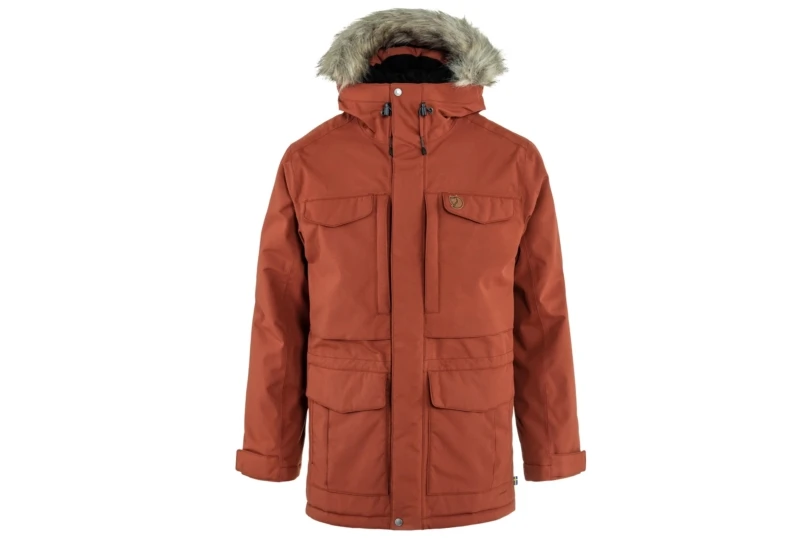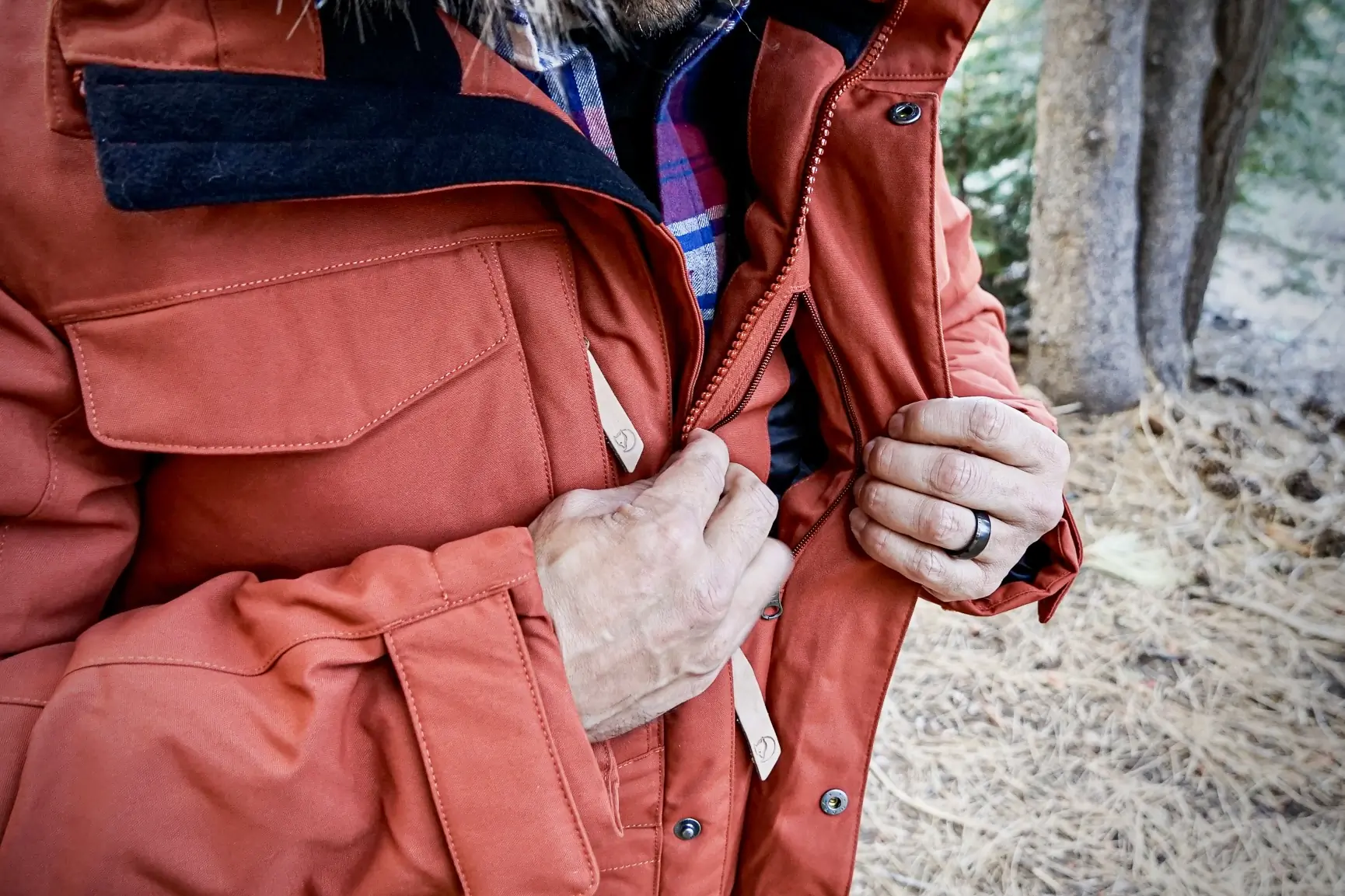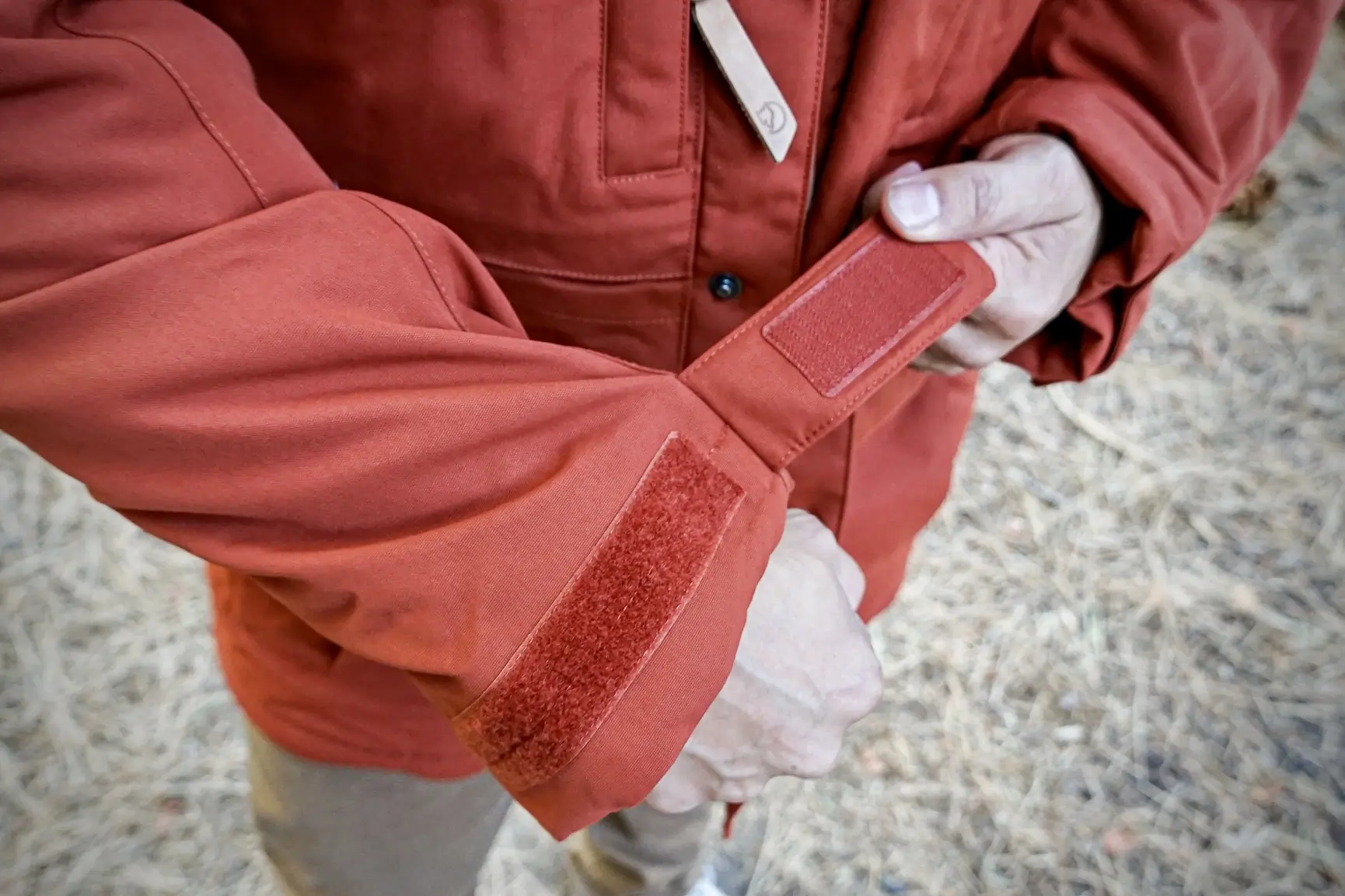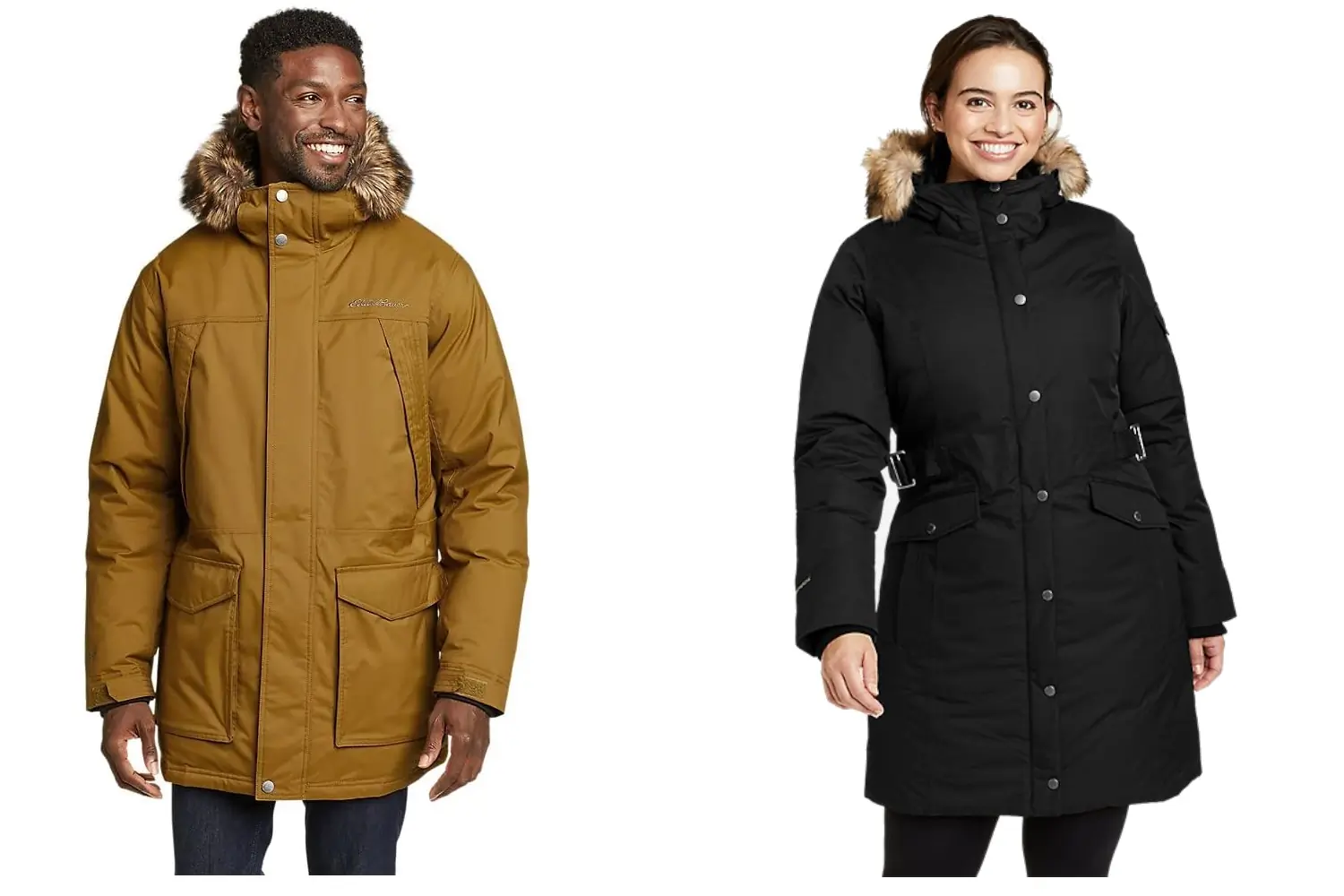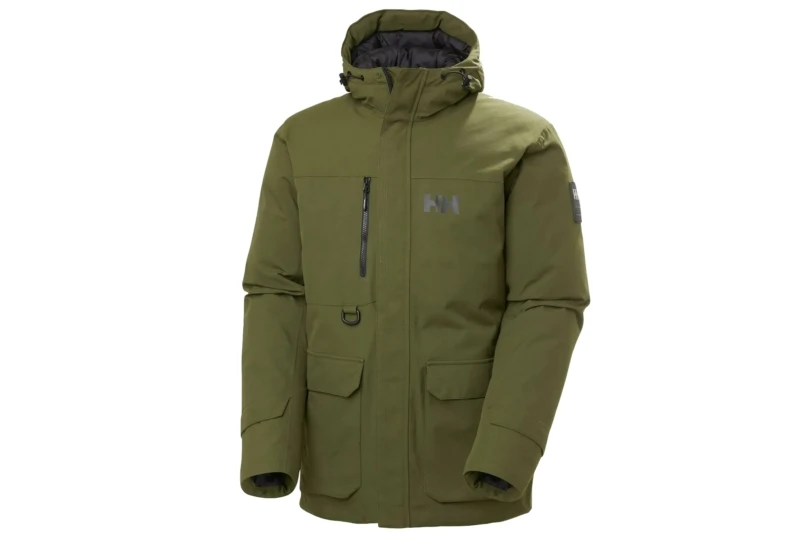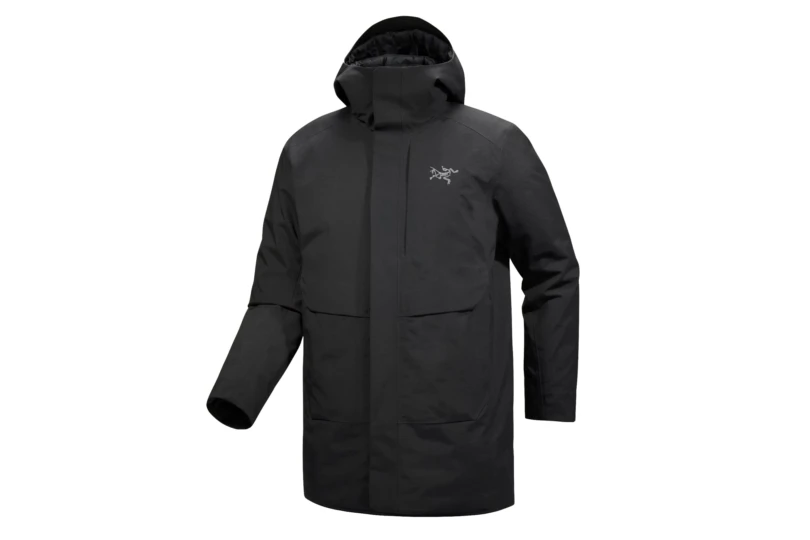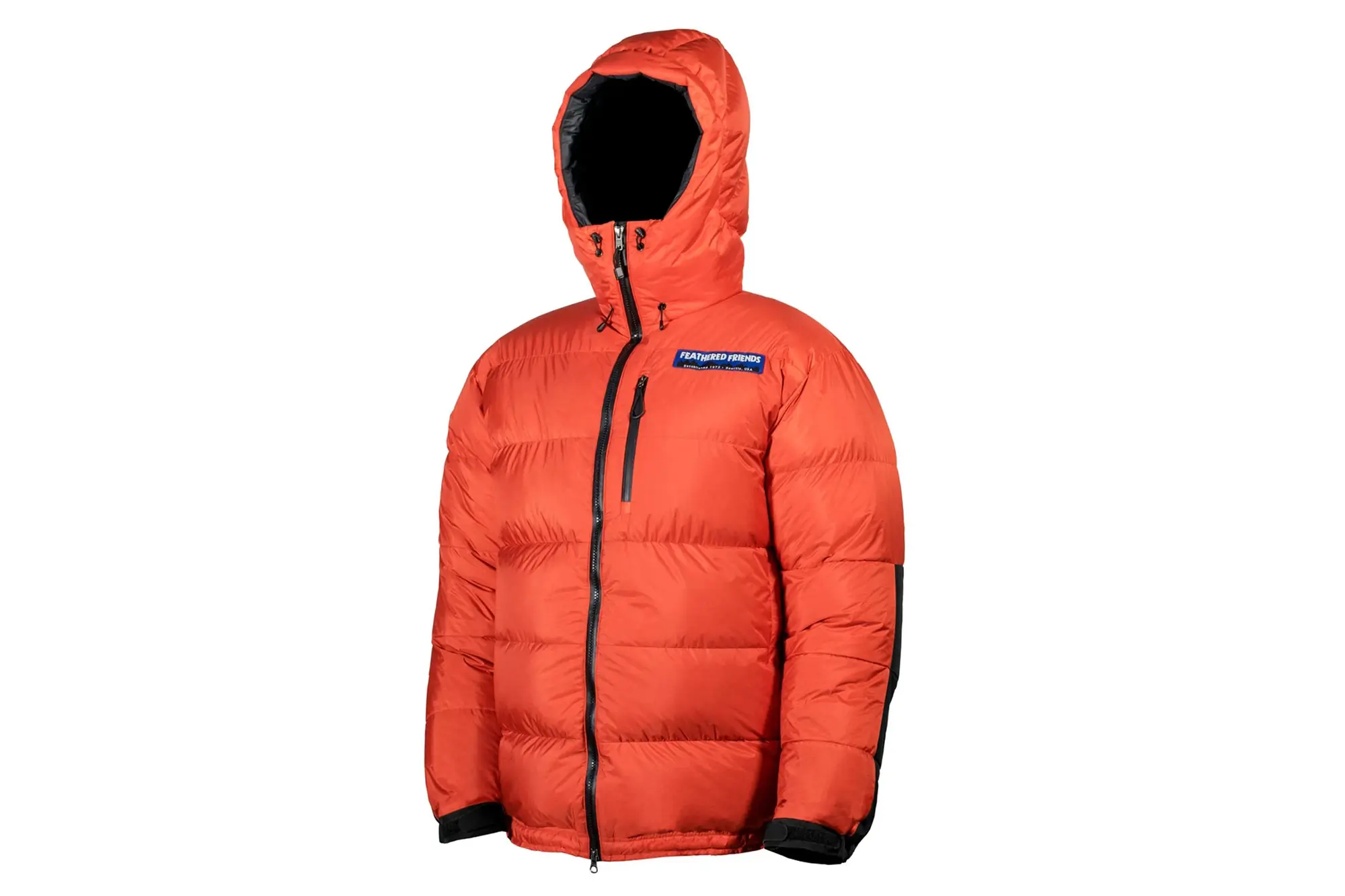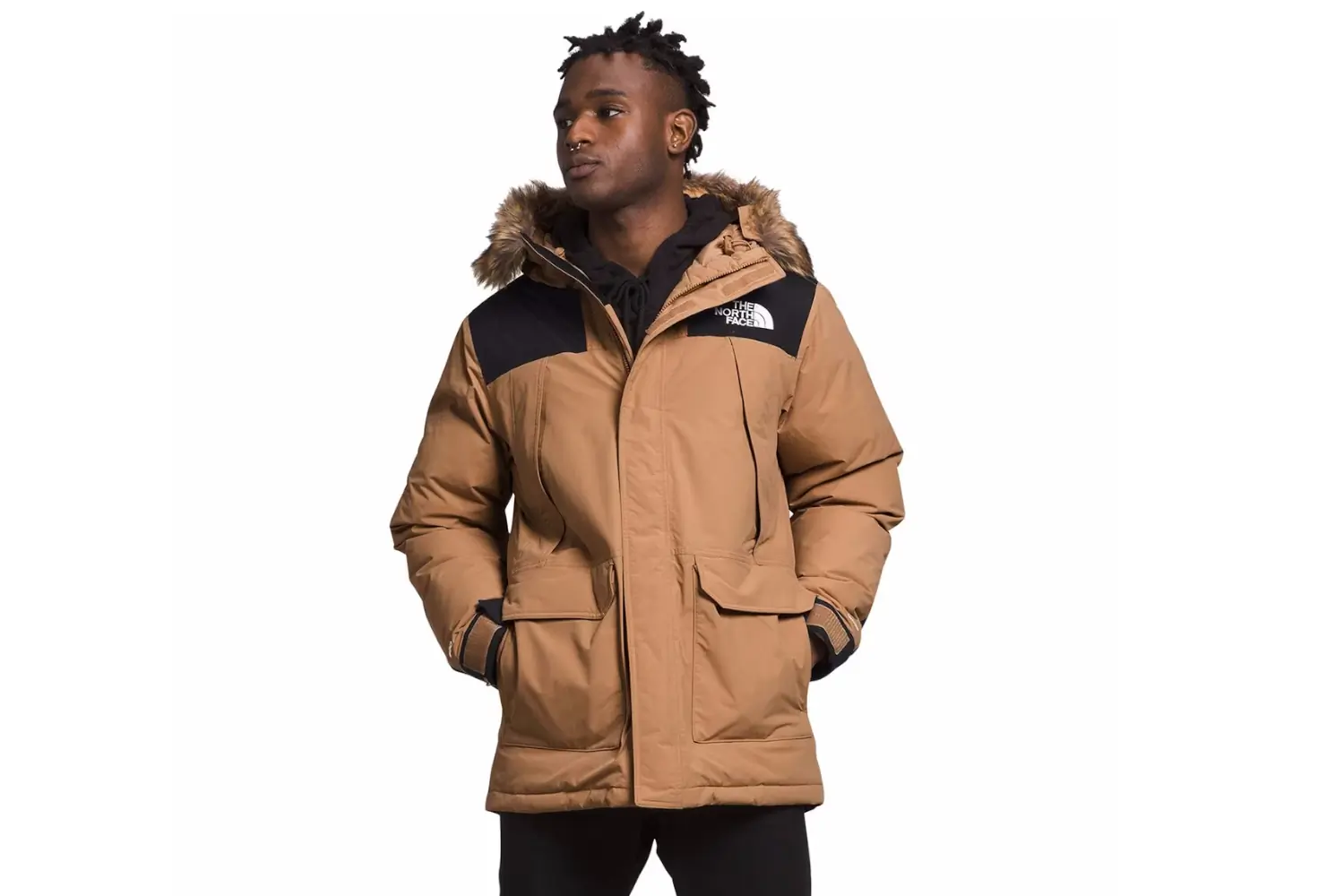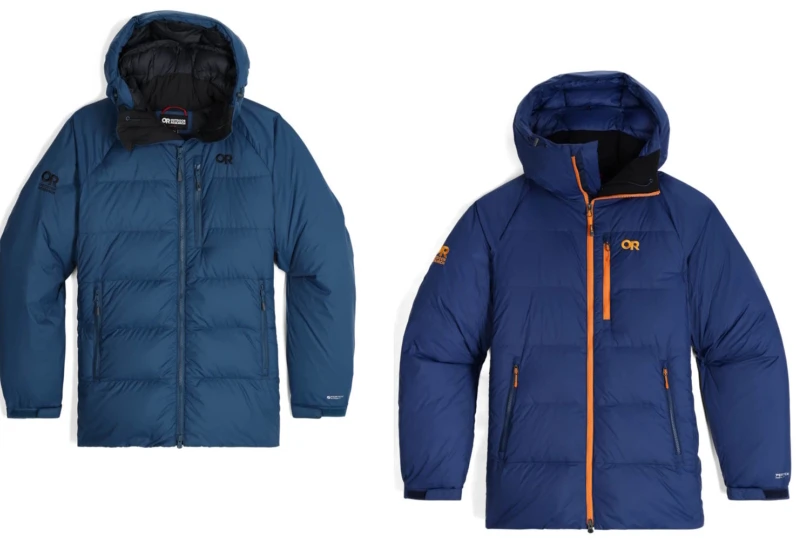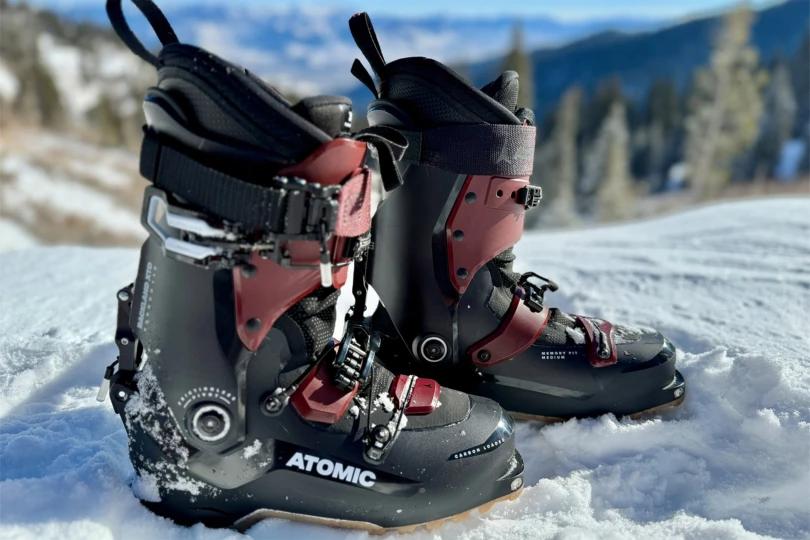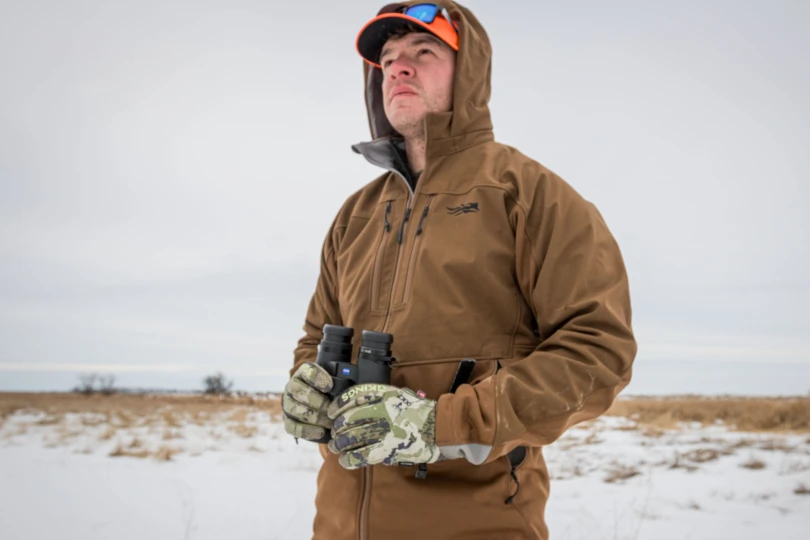You’d be blown away by just how much warmth a parka adds over a waist-length jacket. Just half a foot or so of fabric draping down over your thighs and rump can make all the difference in bone-chilling cold. And in snowstorms, the parka’s length keeps the thighs of your pants from gradually wetting through due to the falling snow.
Oh, sure, jackets allow for more mobility. I wouldn’t want to saddle myself down with a parka if I were climbing up a ridgeline. But for braving the journey between home and Home Depot or for gathering up firewood in the backyard in the dead of winter, I leave the jacket hanging on the peg and throw a toasty, warm parka over my shoulders.
These are the best parkas I’ve found on the market that’ll take you from backyard to beer garden with the best blend of style, warmth, and durability, like a smattering of SUVs that you can wear. Consider the Fjällräven Nuuk Parka if you’re after a simply excellent parka, or, for a good bit less, the Eddie Bauer Superior Down Parka makes a great budget option.
Editor’s Note: We updated our Men’s Parkas guide on November 14, 2025, to add the Helly Hansen Urban Lab Down Parka, The North Face McMurdo Down Parka, and the Outdoor Research Super Alpine Down Parka. We also added new ratings to each parka and an explainer on our rating process.
The Best Parkas for Men in 2025-2026
Fjällräven Nuuk Parka
-
Warmth
7.0
-
Fit
7.0
-
Style
8.0
-
Durability
7.0
- Measured Weight: 4 lbs., 1.1 oz.
- Insulation: 250g Supreme Micro Loft (synthetic)
- Outer Material: 100% recycled polamide
- Waterproof: Yes
- Center Back: 35"
Pros
- Best and most pockets of any jacket we tested
- Great protection with long coverage and oversized hood
- Very warm
- Stylish design
Cons
- Heavy and bulky
- Fit is a bit large
Eddie Bauer Superior Down Parka
-
Warmth
7.0
-
Fit
7.0
-
Style
7.0
-
Durability
6.0
- Measured Weight: 4 lbs., 1.3 oz.
- Insulation: 650-fill RDS-certified down
- Outer Material: WeatherEdge 100% recycled nylon
- Waterproof: Yes
- Center Back Length: 33"
Pros
- Good warmth and weather protection
- Includes two-way front zippers with dual storm flaps
- Includes 7 total pockets (2 zippered hand, 2 external cargo, 2 external chest, 1 internal zippered)
- Reasonable price tag
Cons
- Much heavier than similar models
- Hand pockets are at an awkward angle
Helly Hansen Urban Lab Down Parka
-
Warmth
7.0
-
Fit
7.0
-
Style
7.0
-
Durability
7.0
- Measured Weight: 3 lbs., 10 oz.
- Insulation: Allied Feather & Down 480 fill-power; 60% duck down, 40% duck feather
- Outer Material: 100% Polyamide, HELLY TECH Professional 2-layer fabric layer system
- Waterproof: Yes
- Center Back Length: 30"
Pros
- Life Pocket insulates your phone
- 3-way adjustable hood
- Comfy internal cuffs
- Very durable
Cons
- Heavy
- Hand warmer pockets are uninsulated
- No DWR treatment
Arc’teryx Therme Down Parka
-
Warmth
7.0
-
Fit
8.0
-
Style
9.0
-
Durability
8.0
- Measured Weight: 2 lbs., 6 oz.
- Insulation: 750-fill European goose down
- Outer Material: 2L GORE-TEX ePE 200D nylon face
- Waterproof: Yes
- Center Back Length: 34"
Pros
- Fantastic-looking jacket
- Waterproof ePE membrane
- High-quality down
Cons
- Expensive
- Hand pockets are uninsulated
Feathered Friends Khumbu Down Parka
-
Warmth
10.0
-
Fit
8.0
-
Style
7.0
-
Durability
8.0
- Measured Weight: 2 lbs., 3.2 oz.
- Insulation: 13.3 oz. of 900-fill power down (PrimaLoft Gold in the collar)
- Outer Material: 20D Pertex Shield membrane with PFAS-free DWR finish
- Waterproof: Yes
- Center Back Length: ~30"
Pros
- Exceptional warmth
- Quality down
- Expedition-tested
- Zippered draft tube
- Fat baffled construction
Cons
- Expensive
- Too warm for most pursuits
- Minimal design isn't city-friendly
The North Face McMurdo Down Parka
-
Warmth
7.0
-
Fit
7.0
-
Style
8.0
-
Durability
8.0
- Measured Weight: 3 lbs., 8.8 oz.
- Insulation: 600-fill recycled down
- Outer Material: 70D x 160D 2-layer DryVent 100% recycled nylon
- Waterproof: Yes
- Center Back Length: 32"
Pros
- Good warmth and protection for the price
- Versatile and sporty style
- Includes 7 total pockets (2 zippered hand pockets, 2 external cargo pockets, 2 external chest pockets, 1 internal chest pocket)
- Two-way front zipper with storm flap
Cons
- Heavy
- Hand pockets are at a weird angle
Other Men’s Parkas That Make the Grade
The parkas I’ve highlighted above are among the best our team and I have come across in our search, but they aren’t the only options out there. Consider the parkas below as solid alternatives that we can vouch for this winter.
-
Warmth
8.0
-
Fit
7.0
-
Style
6.0
-
Durability
7.0
- Measured Weight: 1 lbs., 13.5 oz.
- Insulation: 800 fill-power down
- Outer Material: Pertex Quantum Pro 30D nylon ripstop with polyurethane waterproof coating
- Waterproof: No
- Center Back Length: 33.5"
Pros
- Burly exterior Pertex fabric
- Quite warm at below freezing temps
- Brushed tricot lining on inside of collar
- Limited stitch lines on hood and collar for maximum efficiency
Cons
- Not the most stylish for city use
- Hood is cavernous if not worn with a climbing or ski helmet
Parka Comparison Chart
| Parka | Price | Shell | Weight | Insulation |
| Fjällräven Nuuk Parka | $500 | 100% polyamide (rated to 10K/10K) | 4 lbs. | 250 g Supreme Microloft Synthetic |
| Eddie Bauer Superior Down Parka | $349 | Proprietary waterproof/breathable (rated to 5K/5K) | 4 lbs., 1.3 oz. | 650 fill down |
| Helly Hansen Urban Lab Down Parka | $450 | 100% polyamide, HELLY TECH Professional 2-layer fabric layer system | 3 lbs., 10 oz. | Allied Feather & Down 480 fill-power; 60% duck down, 40% duck feather |
| Arc’teryx Therme Down Parka | $700 | Two-layer GORE-TEX ePE | 2 lbs., 6 oz. | 750 fill down |
| Feathered Friends Khumbu Down Parka | $749 | Nylon ripstop (rating unknown) | 2 lbs., 3.2 oz. | 900+ fill down |
| The North Face McMurdo Down Parka | $400 | 70D x 160D 2-layer DryVent 100% recycled nylon | 3 lbs., 8.8 oz. | 600-fill recycled down |
| Outdoor Research Super Alpine Down Parka | $479 | Pertex Quantum Pro 30D nylon ripstop with polyurethane waterproof coating | 1 lbs., 13.5 oz. | 800 fill power down |
How We Tested the Best Parkas for Men
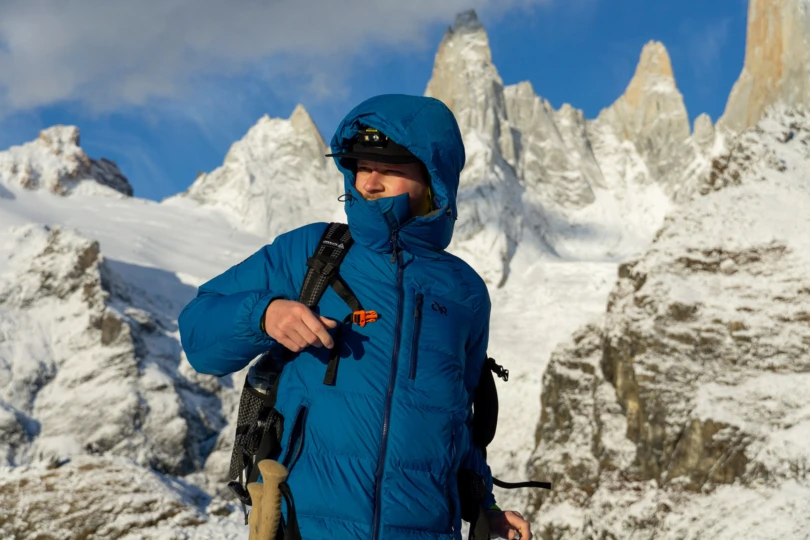
GearJunkie’s winter parka testing is robust (no quick mirror checks here), and we aim to ground-truth just how warm, waterproof, and functional these parkas are before settling on our recommendations. Here’s how we rate these parkas:
- Field testing: Our parka testing hinges on field testing, whether that’s shoveling out our driveways or trekking into the winter hills. We wear these parkas where they were designed to be used, and swap around parkas to ensure we get a solid review of each.
- Shower waterproofing challenge: Beyond sourcing natural precipitation, we also subject each of these parkas to our in-house shower test, where each is worn under a full-blast showerhead for 10 minutes each. We look for soaking seams, as well as the loss of loft in any insulation during this test.
- Our parka rating system:
- Warmth: 30% weighted. Warmth is paramount in our rating, and we look for solid performance below 32 degrees Farenheit to score highly here. The highest scores go to those parkas that hang tough down to 0 degrees.
- Fit: 30% weighted. Does the parka accommodate layering beneath it? Does it have a good drop tail to trap warmth?
- Style: 20% weighted. Style is subjective, but we attempt to crowdsource opinions to get a good idea of how city-savvy or mountain-chic a parka might be.
- Durability: 20% weighted. We look for any wear that has accumulated during our testing period when ranking durability. Was there any feather loss? Did the parka gather any tears? Do all the pockets open smoothly still?
Our Expert Testers
Steve Graepel is an avid skier and camper who spends his winters in the backcountry around his home in Boise, Idaho. Nick Bruckbauer spends just as much time exploring Lake Tahoe’s frozen mountains in the winter as he does in the summer.
Finally, I, Matt Jancer, am a New York–based alpine mountain climber who leaves all my candy-colored mountaineering jackets in my gear bins during the winter. I prefer more durable jackets and parkas for use around town and in the yard, and the choices in this guide are my top picks.
Our Testing Grounds
Many of the folks behind GearJunkie dwell in frigid Wyoming, Minnesota, New York, Colorado, and Montana. We’ve spent many seasons testing out men’s parkas in negative temps and biting winds, and parkas often outperformed jackets in our chilly times of need.
Buyer’s Guide: How to Buy the Best Parka for Men
This guide covers the best parkas for me that I and the GearJunkie crew have come across in our search. We’ve also tested the best general winter jackets, lighter-duty down jackets, and even ski jackets if you’re looking for something a bit more sport-specific.
Otherwise, dig into my top tips for finding your next winter parka. There are a few important things to keep in mind:




Insulation and Warmth
Parkas are defined by warm, lofty fill. The principles are simple. They trap air warmed by the body in a space lofted by insulation. Their insulation is generally available in two options: down or synthetic.
The most common animal insulation is goose down. And not all down is equal. Brands measure the quality of down by its loftiness, or “fill power.” More specifically, it measures how high one ounce of down can fill a measurement tube in inches.
Reasonable down measures 500-650 fill, with high-quality down tips up to 800 fill. You will pay more for higher fill power, but it doesn’t necessarily mean the jacket is warmer. A heavier jacket may use more lower-quality down to increase its warmth.
But, it doesn’t end there. More mindful companies are certifying where they source their down. And down, whose Achilles’ heel is water, can be treated with nanoparticles. Treatment doesn’t affect its weight, but it does increase the fiber’s resistance to moisture.
There’s been a race to develop synthetic fibers that match down’s efficiency. Traditionally, synthetics don’t compress as well as down, and they also don’t have the same pillowy plushness. But the trade-offs produce a jacket that is usually less expensive and stays lofted when wet.
While I have yet to fully wear out a synthetic jacket, over time, repeated compression will break the synthetic fibers to the point that they will no longer be able to loft.
A good down jacket will cost more than its synthetic counterpart. If cleaned, stored, and generally cared for, a down jacket can last decades, making it much easier to swallow the price.
Waterproofing
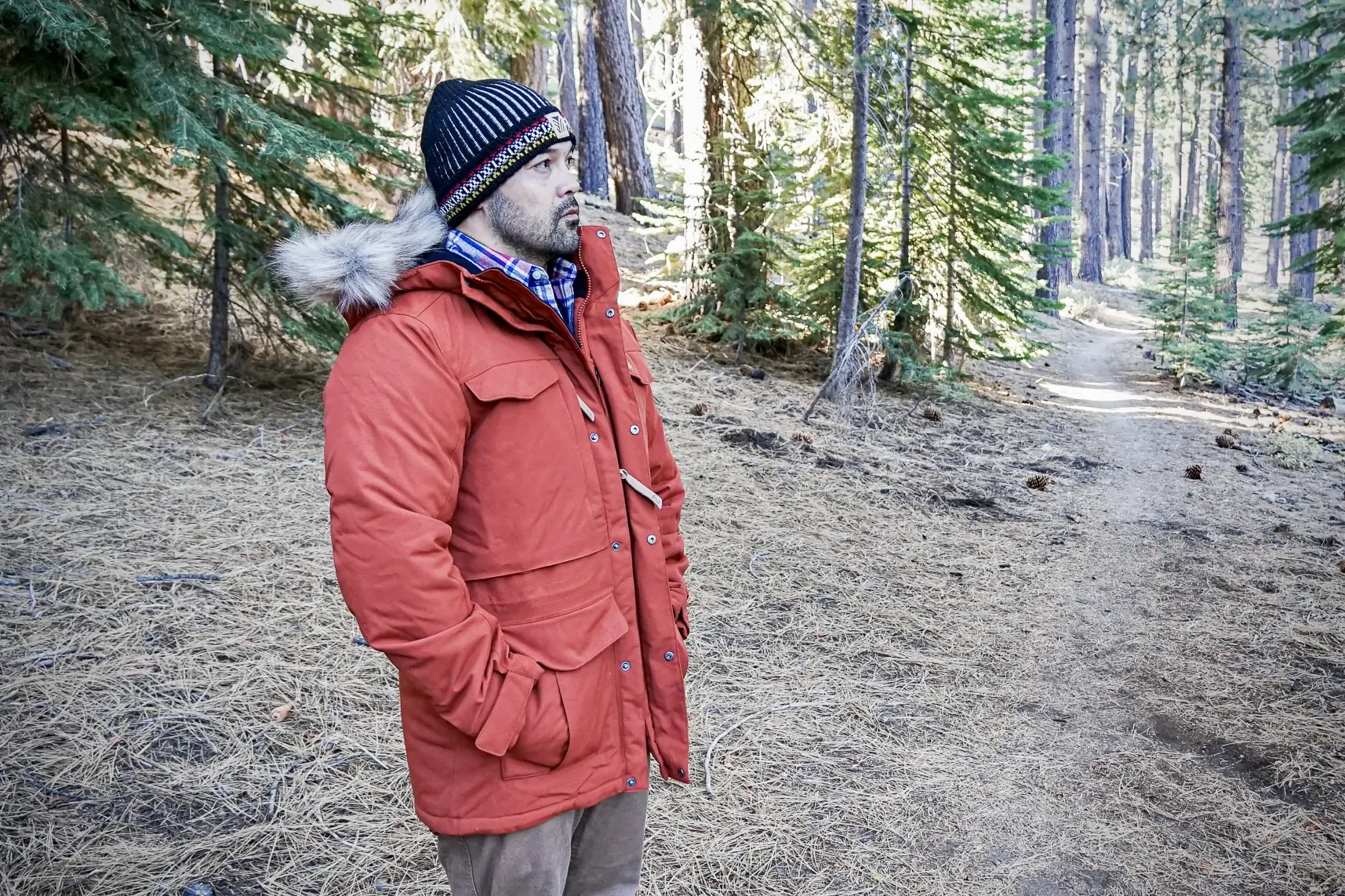



Since winters can be both wet and cold, staying dry means staying warm. I always recommend some level of waterproofness in your parka.
It’s important to understand that waterproof and water-resistant are not the same. One blocks moisture entirely while the second is a stopgap that eventually lets water in. Unless your winters are cold and dry, we almost always prefer a waterproof parka.
Waterproofness is measured in hydrostatic pressure (in millimeters). Is a higher pressure better? Yes and no. As a metric, keep in mind that the average rainfall has a hydrostatic pressure of 1,400 mm.
So, claims of 30,000-50,000 mm are probably irrelevant — especially if your winters yield more snow than rain. Most parkas on this list have a waterproof rating of around 10,000 mm.
For added protection, many parkas have taped seams (where water would most likely breach the shell). Waterproof zippers and storm flaps help to protect the front.
Fit and Style
These factors are personal preferences. More casual jackets have a tailored fit, muted colors, and feel less technical on the street.
The best parka works over a light shirt or flannel; it’s a one-and-done solution to stay warm. This also makes parkas the best choice for city conditions, where you don’t want to send out a search party to find all your disrobed layers.
Mountain-oriented parkas often trade warmth for features. They layer better, allowing room for a base and midlayer underneath.
If you are on a budget and play outside in winter, it’s easier on the wallet to follow your primary use case. Buy a technical winter parka. It doesn’t work the other way — you really can’t bring a city-oriented parka into the backcountry. It’s too heavy and won’t have the features you need while hiking or climbing.
Because buying a winter parka is a long-term investment, we recommend you always try before you buy.




Features
Regardless of style, a winter parka should run longer and overlap with the pants. This prevents gaps and keeps the cold from seeping in.
Because of this extra length, a parka will inherently have a long zipper. On longer jackets, smart designers don’t run the zipper to the end of the jacket. A good front zipper design is easy to engage without bending over and doesn’t bind the legs with your stride.
Double-sided zippers can be great on more technical jackets but aren’t necessary on more casual jackets. Storm flaps, though, will prevent cold wind from intruding into the jacket.
Long, fat zipper pulls allow you to work zippers with gloves. Well-placed, oversized pockets keep your everyday carries and gloves close at hand.
The hood should fit around the head (or, if a technical parka, around a helmet), and adjust around the face without blocking your view. The insulation in the hood is typically lighter, so you will want to wear a cap.
Many winter parkas have faux fur around the face. This prevents snow from blowing into your face and also traps some extra heat.
We also look for parkas with long arms (to overlap gloves) that end in cuff gaskets (our preference) or close with hook and loop. And it’s not a winter parka if it doesn’t have insulated hand pockets.
Price & Value
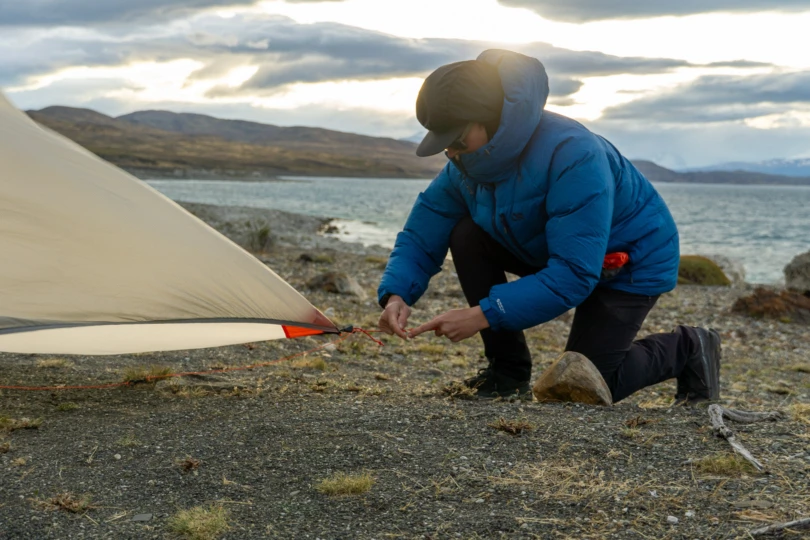



Budget
Parkas can be quite pricey, but that doesn’t mean there aren’t solid budget-friendly options available. Typically, you’ll see concessions in terms of down fill quality (600-650 fill is common in this range), as well as feature density, with fewer pockets, less-adjustable fits, and non-waterproof outer layers. The $349 Eddie Bauer Superior Down Parka is a great budget option that even succeeds in retaining a waterproof exterior by using EB’s in-house membrane.
Mid-Tier
Expect to pay between $400 and $500 for a solid, mid-tier parka, with standard-bearers including the $400 The North Face McMurdo Down Parka, $450 Helly Hansen Urban Lab Down Parka, and $500 Fjällräven Nuuk Parka. These parkas will commonly use a higher-quality down fill, such as 750 FP, and will be more feature-dense with specific pockets for devices, incorporate toasty fur fringes, or add a waterproof membrane to the exterior.
Premium
$700 and above is the realm of premium parkas, and the $700 Arc’teryx Therme Parka is a prime example. The name-brand GORE-TEX ePE membrane certainly adds an impressive amount of performance, but the ample amount of European goose down and undeniable attention to detail are what cinch the price point. The $749 you’ll pay for the Feathered Friends Khumbu Down Parka is the top-dollar of our recommendations, and reflects the no-exceptions quality of this cottage-industry mountaineering brand.
Frequently Asked Questions
Winter jackets and winter parkas are similar in almost every way. Both styles are insulated outer layers with zippers, pockets, and hoods. Though the line between jackets and parkas is blurry, parkas tend to be heavier and warmer with a longer cut. If a brand chooses to advertise its product as a parka, expect it to have a lot of insulating fill. Parkas also aren’t quite as packable as jackets, which often stuff into their own hand pocket.
No. While down remains the gold standard for warm and light insulation, many of the parkas on this list utilize synthetic insulation instead. While down is very lightweight, it tends to lose its insulative qualities when it’s wet. Synthetic insulation is heavy, but it’s a bit more durable and it can still keep you warm when saturated with moisture.
Generally speaking, yes, parkas are one of the pricier outerwear items. Down insulation and GORE-TEX shells are expensive materials, and parkas use a greater volume of these than most other clothing items. The recommended parkas on this list range from $300 to around $800. In our experience, it is possible to find great sales and deals on parkas.
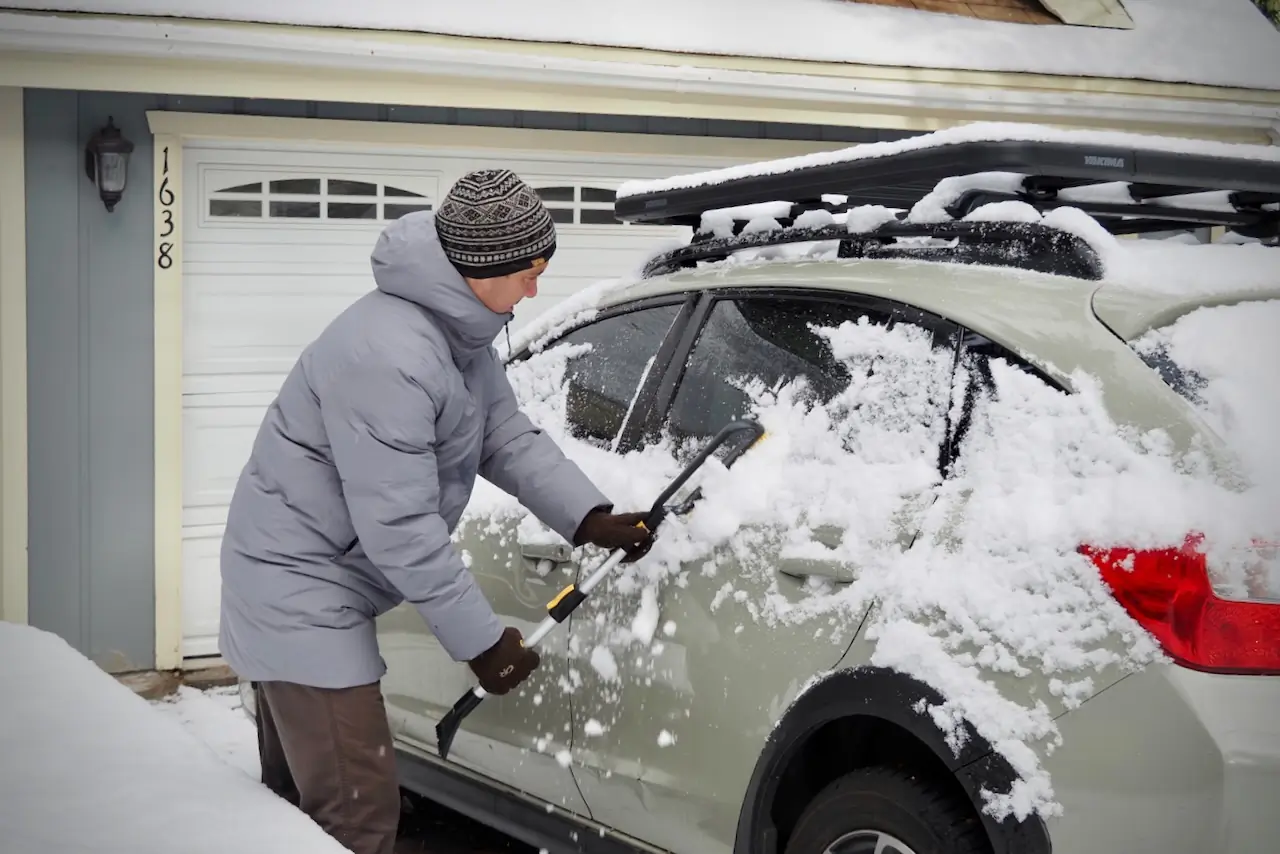

The Best Winter Jackets of 2025
We tested the best winter jackets for every climate and budget — from Patagonia, Arc’teryx, Fjallraven, The North Face, REI, and more.


The Best Women’s Winter Jackets of 2025-2026
Whether you’re looking for a warm, stylish coat to commute in a snowstorm, spectate a hockey game, or enjoy après-ski, we’ve got you covered with the best women’s winter jackets.

